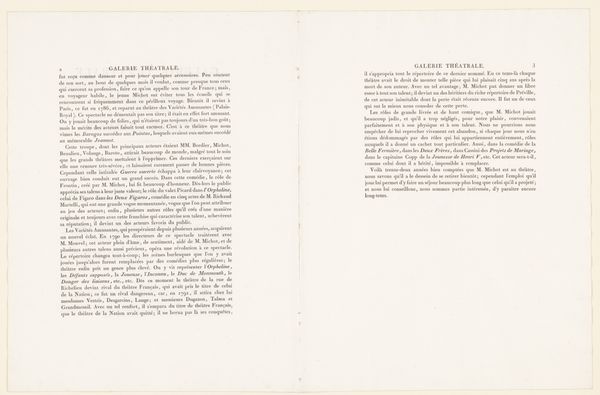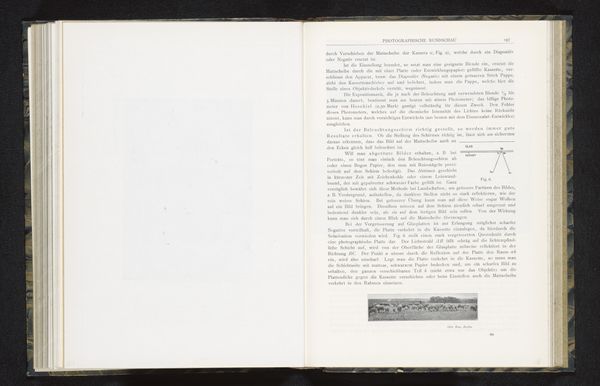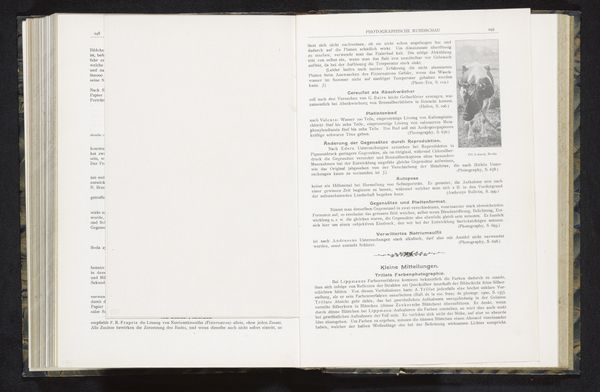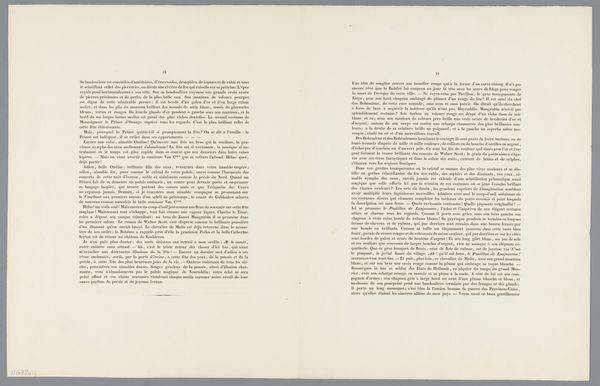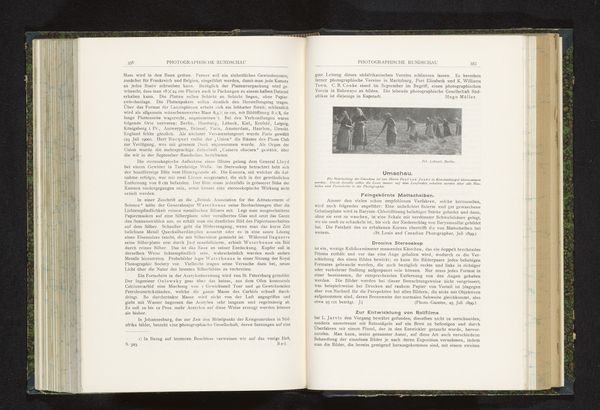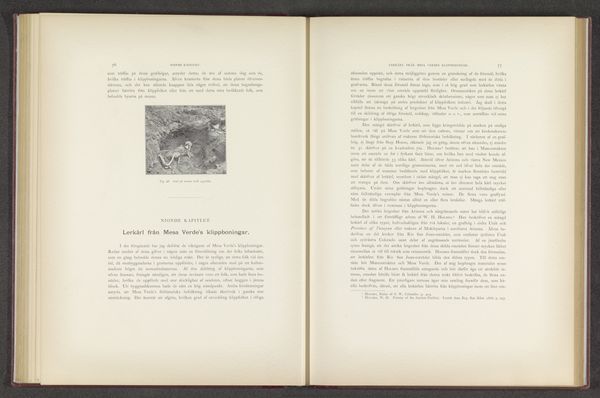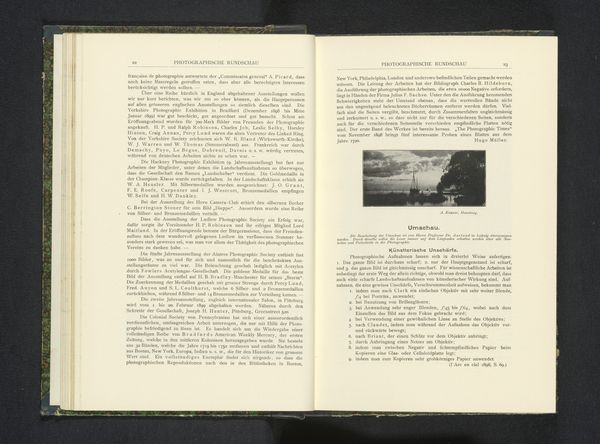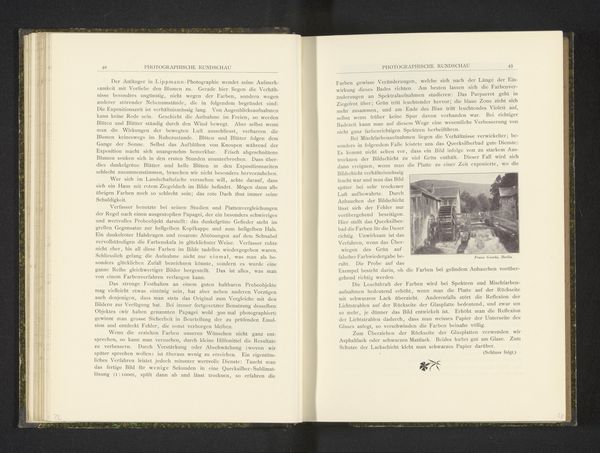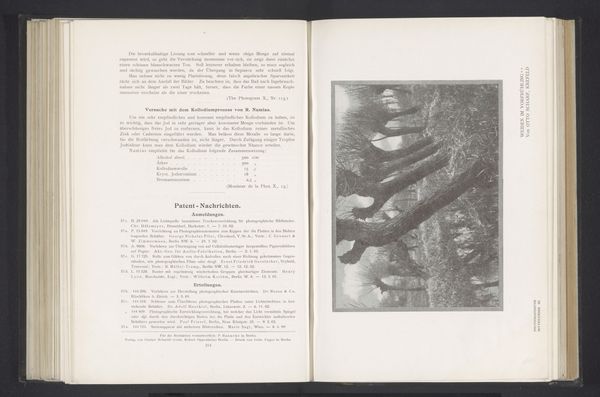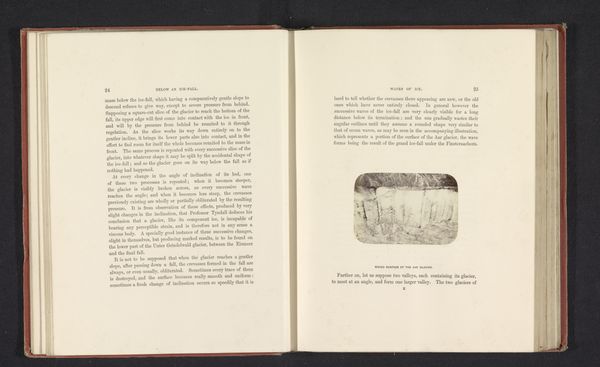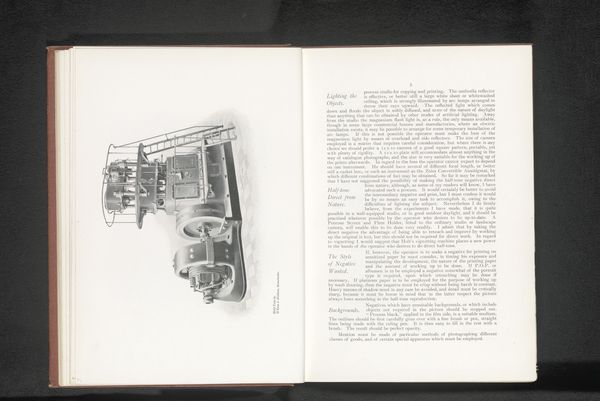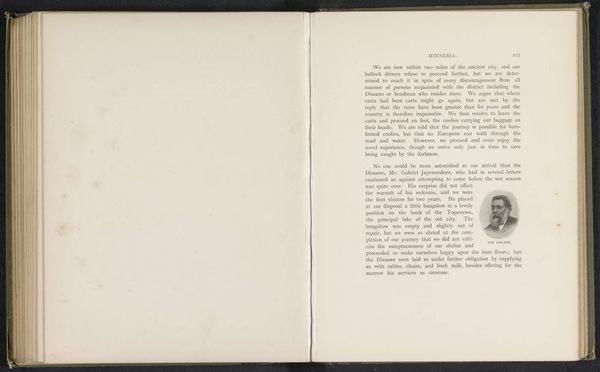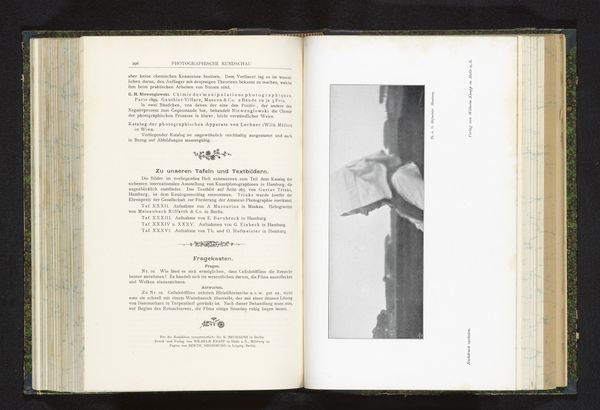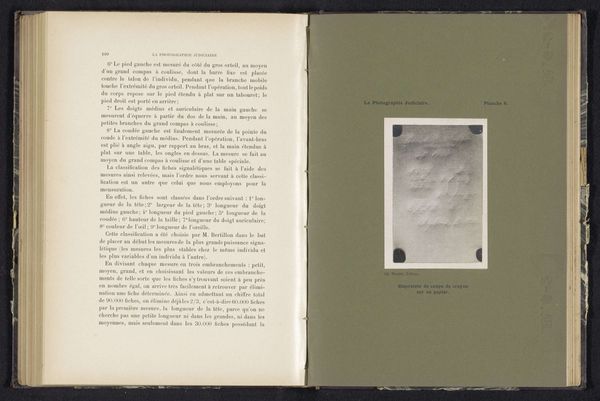
The Yosemite book : a description of the Yosemite Valley and the adjacent region of the Sierra Nevada, and of the big trees of California 1868
0:00
0:00
print, photography
#
script typography
#
hand-lettering
# print
#
hand drawn type
#
landscape
#
photography
#
hand-drawn typeface
#
fading type
#
stylized text
#
thick font
#
white font
#
handwritten font
#
small lettering
Dimensions: height 305 mm, width 245 mm, thickness 45 mm
Copyright: Rijks Museum: Open Domain
Curator: We are looking at a book opened to its contents pages; it is entitled "The Yosemite Book," created in 1868. Josiah Whitney authored it as a description of Yosemite Valley, the adjacent Sierra Nevada, and California's big trees. Editor: There's an immediate contrast here; the dense text filling the left page gives a different texture than the neat "List of Photographs" on the right. Curator: It served as a comprehensive guide to Yosemite, written during a time of increasing interest in the American West. Its impact on the accessibility and preservation efforts of the area can't be understated. It framed Yosemite for public consumption and understanding. Editor: Considering it's a photographic list, it underscores photography’s materiality. Paper stock, ink density, the precision of type – all were chosen and reflect mid-19th century publishing standards. How does the rise of mass-produced visual culture impact access? Curator: "The Yosemite Book" played a pivotal role. Whitney’s position as the California State Geologist gave weight to its authority. It was more than just a guide; it helped establish Yosemite as a significant landmark, a public trust requiring governmental care and influenced the National Park idea. Editor: It raises a crucial question: what narrative is considered authoritative and by what labor that is constructed and distributed? Curator: Exactly. And if we think about how perceptions of wilderness shaped conservation, access, and ultimately, who had the privilege to experience these spaces... the book and how it was used matters deeply. Editor: Seeing this digitized copy, I reflect on what aspects have stayed, and how shifting distribution methods have radically reshaped not only how art is accessed but by whom. Curator: I agree. A study into the book itself and its societal impact is necessary to see how narratives influence preservation movements. Editor: Yes! Looking closely at the methods through which information itself can shape perspectives encourages me.
Comments
No comments
Be the first to comment and join the conversation on the ultimate creative platform.
